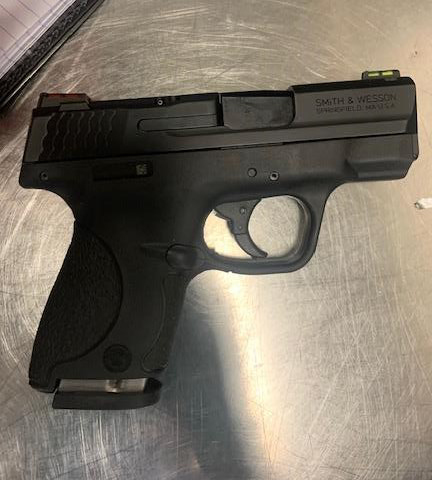
REDDING, California - Officers with the Transportation Security Administration (TSA) at Redding Municipal Airport (RDD) discovered two loaded firearms Thursday during the routine X-ray screening of carry-on luggage at the security checkpoint.
The first firearm find occurred at 7 a.m. when a TSA officer saw the image of a firearm on the X-ray screen. The firearm, .40 caliber Smith & Wesson MP40 handgun was loaded with six rounds of ammunition, was discovered in the carry-on of a male passenger ticketed for travel to Los Angeles International Airport.
The second firearm discovery occurred around 2 p.m. when a loaded .38 caliber Charter Arms gun loaded with five rounds of ammunition was detected in the carry-on of a female traveler headed to Hollywood Burbank Airport.
In both cases, screening was stopped and TSA notified airport law enforcement, which responded to the security checkpoint.
“The discovery of two firearms in a single day at Redding Municipal Airport is significant. However, it is a vivid reminder of the message that TSA has repeatedly communicated to travelers: take note of the contents of your carry-on luggage prior to coming to the airport to ensure that you do not bring firearms or others prohibited items to the security checkpoint,” said TSA Federal Security Director Sid Hanna who oversees TSA operations at RDD. “TSA officers will continue to stay focused on their security mission to ensure that prohibited items including firearms do not make it into the sterile area of the airport or onto an aircraft.”
There is no evidence these two incidents are linked. Both travelers were interviewed by law enforcement and allowed to continue on their travels.
These are the second and third firearm discoveries by TSA officers at RDD so far this year. TSA officers at RDD discovered a loaded firearm on August 18, 2021.
Below is a table of annual TSA firearm discoveries in carry-on luggage at RDD dating back to 2018:
|
2018 |
2019 |
2020 |
|
0 |
1 |
0 |
Firearms can be transported on a commercial aircraft only if they are unloaded, packed in a locked, hard-sided case, declared to the airline and placed in checked baggage. Ammunition, firearm parts and any type of replica firearm are also prohibited in carry-on baggage and must be checked.
TSA will review the circumstances of each firearm incident and levy a civil penalty against each of the travelers. The recommended civil penalty for a firearm starts at $2,050 and can go up to the statutory maximum of more than $10,000 per violation.
In addition to civil penalties, individuals who violate rules regarding traveling with firearms will have Trusted Traveler
Firearms can be transported on a commercial aircraft only if they are unloaded, packed in a locked, hard-sided case and placed in checked baggage. Ammunition, firearm parts and any type of replica firearm are prohibited in carry-on baggage and must be transported in checked luggage.
At the airport during the check-in process, a traveler should go to the airline ticket counter to declare the firearm, ammunition and any firearm parts. Prior to traveling, passengers are encouraged to check gun laws and regulations at their destination to ensure they are in compliance with local and state laws. TSA also recommends travelers check with their airline prior to their flight to ensure they comply with any airline-specific requirements. More information on traveling legally with a firearm is available on TSA’s website.
TSA has also seen an increase locally and nationwide in the number of stun guns coming to the security checkpoint in carry-on luggage.
Stun guns and other electro-shock weapons are never allowed in carry-on luggage. In addition, they must be transported in checked baggage in such a manner that the device is inoperable from accidental discharge.
